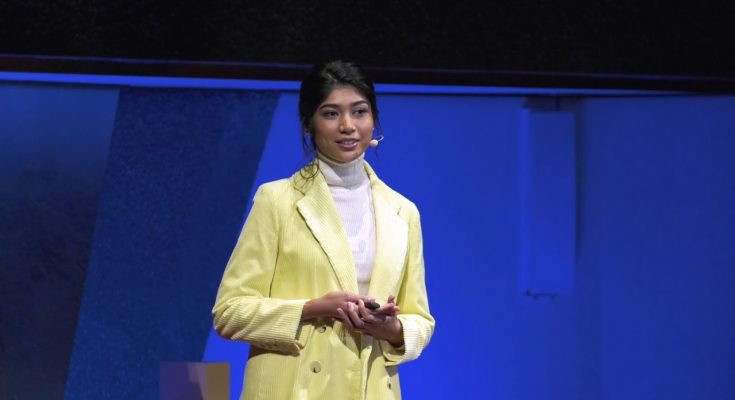TOKYO : From moving from Japan to the States to India all before the age of 10, to being picked on at school for looking different to winning the 2016 Miss World Japan title—and being the first half—Japanese contestant to do so, Priyanka Yoshikawa is the definition of resilience.
While she’s been a staple of the modeling world in Japan and abroad since finishing high school, Priyanka has used her media attention to shine a light on how important it is to embrace diversity in a nation as homogeneous as Japan.
In May she launched an ageless, genderless, and ethnically diverse CBD wellness and beauty range to help solidify her message, inspired by her experience as a multi-racial woman growing up in Japan and her excitement for aging.
You had a pretty exciting childhood, can you tell us a little bit about your background?
I was born in Tokyo to a Japanese mom and Indian dad. My mom has an incredible passion for learning, so when I was in the first grade, I moved to California with her so she could broaden her studies.
Going to school in the States was so eye-opening, the diversity of my classmates was something that opened my eyes to the world and was such a formative experience for me. It was the first time I’d really seen peers that looked like me. I really think while I didn’t know it at the time, this set the foundations for what my life’s ambitions would later become.
But by the time I was in 4th grade [nine years old], my Mom was completing her studies, and my Dad was out of Japan a lot on business, so my parents asked me to decide between moving back to Japan to live with my grandparents, or going to India to live with my father’s family. After so much time outside of the country, I couldn’t imagine going back to life in Japan, so I chose to move to India. I moved to Calcutta to live with my cousins and get in touch with my roots, and I learned basic Bengali in a month.
When did you come back to Japan?
In the 6th grade, I moved back to Tokyo. It was a massive culture shock. I had the darkest skin out of anyone in my class, and I couldn’t read or speak Japanese that well. While I think now in hindsight, it’s made me a lot stronger, at the time I was outcasted for being different. My classmates would make comments about my body hair, and if they touched me, they’d try and wipe off the ‘germs’ that they thought they would catch from me.
I quickly learned that in Japan, nobody wants to stick out, while the US is a very multicultural country. India isn’t super multicultural, but the country has a lot of internal diversity. The culmination of these experiences made me question identity, and my understanding of that concept means.
How did you first become involved in Japan’s beauty industry?
After school, I was doing modeling; I think my attraction to the beauty world was an act of defiance to all the kids in school who made comments about how I looked. I believed in myself and thought it was a way to show people that what makes me different makes me beautiful.
I got scouted for pageants and decided to compete in the Miss World Japan 2016 pageant because its mission is “beauty with a purpose.” I was the first “hafu” (half-Japanese) crowned Miss World Japan and the second to win a pageant in all of Japan after Ariana Miyamoto, who had previously won Miss Universe Japan in 2015.
Through winning the pageant, you became a key face of diversity in Japan, something that you lean into heavily, you even did a TEDx Talk on it two years ago. Have you noticed Japan become more progressive in the years since that?
Yes, being half, and especially half Indian garnered a lot of attention both in Japan and in India. The move to use my newfound platform to talk about diversity was an organic transition, and one I was happy to embrace.


![[商品価格に関しましては、リンクが作成された時点と現時点で情報が変更されている場合がございます。] [商品価格に関しましては、リンクが作成された時点と現時点で情報が変更されている場合がございます。]](https://hbb.afl.rakuten.co.jp/hgb/1bcca677.cb7ae344.1bcca678.8dabbf7f/?me_id=1278256&item_id=17537273&m=https%3A%2F%2Fthumbnail.image.rakuten.co.jp%2F%400_mall%2Frakutenkobo-ebooks%2Fcabinet%2F9613%2F2000006509613.jpg%3F_ex%3D80x80&pc=https%3A%2F%2Fthumbnail.image.rakuten.co.jp%2F%400_mall%2Frakutenkobo-ebooks%2Fcabinet%2F9613%2F2000006509613.jpg%3F_ex%3D240x240&s=240x240&t=picttext)


